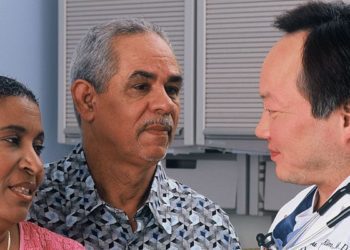Non-antimuscarinics show promise for overactive bladder
1. Physical and behavioral therapy, biofeedback, complementary/alternative medicine, botulinum injections, mirabegron, magnetic and electrical stimulation, sacral neuromodulation and posterior tibial nerve therapy all demonstrated efficacy in treating overactive bladder.
2. Many of these modalities are superior to control but have not been compared to antimuscarinic drugs.
Evidence Rating Level: 1 (Excellent)
Study Rundown: Overactive bladder (OAB) is a condition in which patients experience sudden urges to urinate can be difficult to control; patients with OAB may experience incontinence and need to urinate frequently. This condition affects many women and men and may result in poor quality of life. Initial treatment includes lifestyle modifications and pelvic floor exercises. For individuals who do not improve adequately, antimuscarinic drugs are often used as a first line pharmacologic option. However, while anti-muscarinic medications have been demonstrated to be superior to placebo, their effect on OAB is somewhat limited and they carry significant side effects like constipation and dry mouth such that patient satisfaction is low and discontinuation rates high. Other studies have explored the role of physical therapy, beta agonist medications, neuromodulation, electrical or magnetic stimulation, botulinum toxin injection and complementary medicine in treatment of OAB. In the present work, the authors reviewed the results and quality of these studies and found that these therapies are efficacious in treating OAB, though they have variable risks, and further studies comparing them to antimuscarinic agents are needed.
Strengths of this study were inclusion of comparative studies with ≥2 arms, exclusion of studies with limited statistical power, and evaluation of a wide range of non-antimuscarinic therapies. This review was limited by variations in intervention, control/comparison arm, and outcomes of the studies; this precluded meta-analysis. Replication of the results in the included studies, as well as further comparative studies, are needed to better guide treatment of OAB.
Click to read the study in AJOG
Relevant Reading: Comparative effectiveness of anticholinergic therapy for overactive bladder in women: a systematic review and meta-analysis
In-Depth [systematic review]: This systematic review evaluated the efficacy of non-antimuscarinic treatment options for OAB in adults ≥18 years old. The authors examined 99 studies of varying design; all included studies with 2 arms, at least one of which was a non-antimuscarinic therapy. Treatment modalities included behavioral therapy, alternative medicine, biofeedback, botulinum, mirabegron, magnetic stimulation, vaginal electrical stimulation, sacral neuromodulation, and posterior tibial nerve therapy. Outcomes were classified as subjective, objective, voiding diary, validated symptom questionnaires, and quality of life.
Physical therapy, botulinum injections, acupuncture, magnetic stimulation and posterior tibial nerve stimulation were superior for subjective and objective outcomes when compared to controls and demonstrated similar efficacy to antimuscarinics. Sacral neuromodulation was superior to antimuscarinics for bladder diary, urodynamic and quality of life outcomes, but was inconsistently superior to control. Caffeine reduction, weight loss, and fluid reduction were superior to controls for urgency symptoms. Mirabegron and bladder training were superior to placebo for incontinence episodes and similar to antimuscarinics. Transvaginal electrical stimulation was superior to control for objective and subjective OAB symptoms.
Image: PD
©2015 2 Minute Medicine, Inc. All rights reserved. No works may be reproduced without expressed written consent from 2 Minute Medicine, Inc. Inquire about licensing here. No article should be construed as medical advice and is not intended as such by the authors or by 2 Minute Medicine, Inc.



